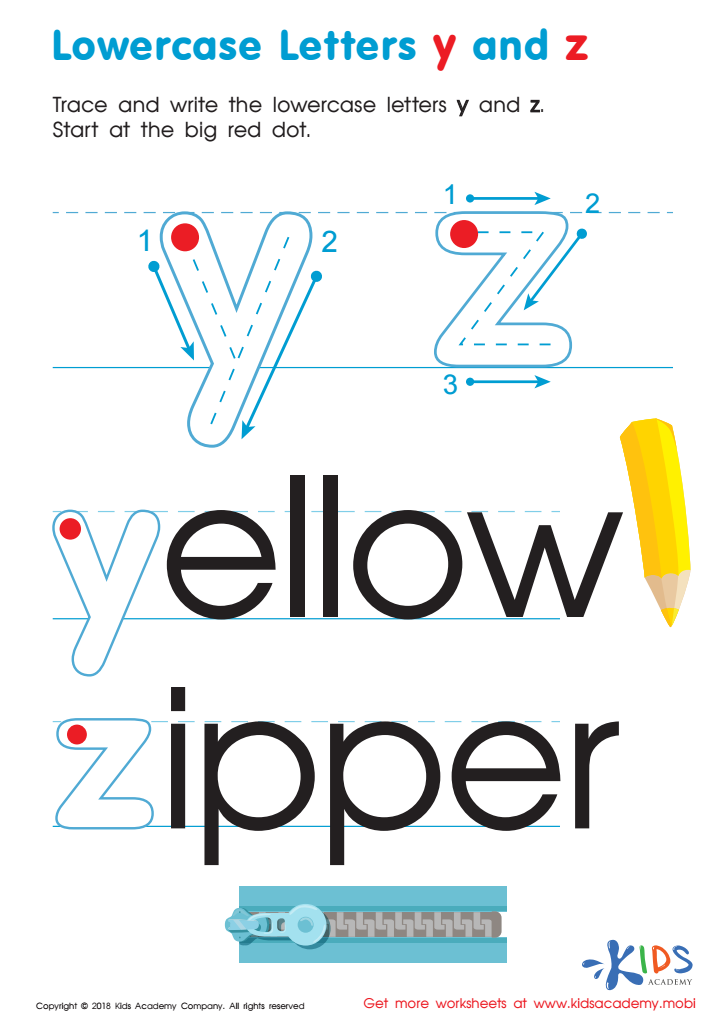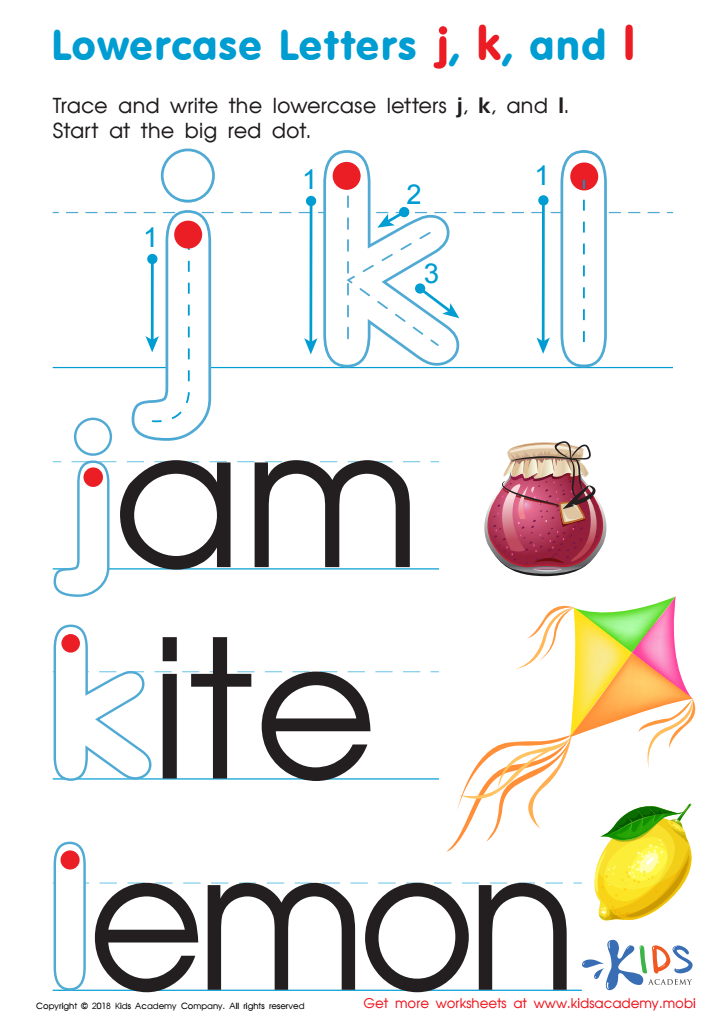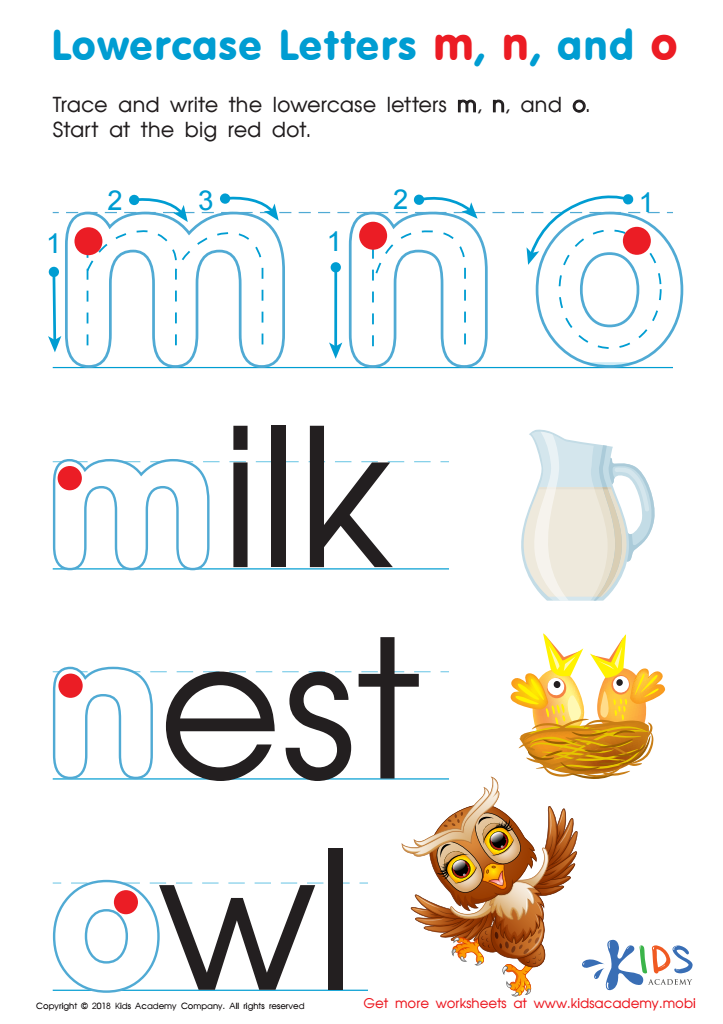Lowercase letter writing Upper & Lowercase Letters Worksheets for Ages 4-7
3 filtered results
-
From - To
Unlock the joys of literacy with our engaging Upper and Lowercase Letters Worksheets, designed specifically for children ages 4-7. These interactive resources focus on teaching lowercase letter writing through fun activities that captivate young learners. Each worksheet encourages creativity and fine motor skills development, as children learn to recognize, trace, and write each letter. With a variety of engaging exercises, including coloring and matching games, kids will build a strong foundation in writing while having fun. Perfect for parents and educators, these worksheets are an essential tool in fostering early literacy skills. Start your child’s writing adventure today!


Lowercase Letters y z Worksheet


Lowercase Letters j k l Worksheet


Lowercase Letters m n o Worksheet
Parents and teachers should prioritize teaching lowercase and uppercase letter writing to children aged 4-7 for several compelling reasons. First, understanding both types of letters is fundamental to developing literacy skills. Learning to differentiate between uppercase and lowercase letters is essential for reading proficiency; a child's ability to recognize and understand the structure of written words lays the groundwork for future reading successes.
Moreover, children learn to express themselves through writing during these crucial developmental years. Mastery of letter formation allows young learners to communicate their thoughts and ideas clearly, fostering creativity and self-expression. It also boosts fine motor skills as children practice gripping writing tools correctly and developing control over their hand movements.
Encouraging neat and legible handwriting helps to build a child’s confidence. Being able to write clearly supports academic performance and participation, as students often need to complete writing assignments or label drawings.
Finally, consistent practice offers opportunities for parents and teachers to engage in meaningful interactions. Collaborative activities, like writing stories or letters, strengthen bonds and create a positive learning environment. When early literacy skills are nurtured, children are more likely to develop a love for reading and writing that lasts a lifetime.
 Assign to My Students
Assign to My Students



















